Limitation of Forward Collision-Avoidance Assist
Forward Collision-Avoidance Assist is an assistant function for a driver in a certain risky driving condition and it does not take every responsibility for all risks from driving condition.
Forward Collision-Avoidance Assist recognizes the driving situations through front view camera and front radar.Thus, for a situation out of the sensing range, Forward Collision-Avoidance Assist may not normally operate. The driver should pay great caution in the following situations. Forward Collision-Avoidance Assist operation may be limited.
Recognizing vehicles
The sensor may be limited when:
-
The front view camera or front radar sensor is blocked with a foreign object or debris
-
The front view camera lens is contaminated due to tinted, filmed or coated windshield, damaged glass, or stuck of foreign matter (sticker, bug, etc.) on the glass
-
Inclement weather such as heavy rain or snow obscures the field of view of the front radar sensor or front view camera
-
There is interference by electromagnetic waves
-
There is severe irregular reflection from the radar sensor
-
The front view camera/front radar sensor recognition is limited
-
The vehicle in front is too small to be detected (for example a motorcycle etc.)
-
The vehicle in front is an oversize vehicle or trailer that is too big to be detected by the front view camera recognition function (for example a tractor trailer, etc.)
-
The front view camera's field of view is not well illuminated (either too dark or too much reflection or too much backlight that obscures the field of view)
-
The vehicle in front does not have their rear lights or their rear lights does not turned ON or their rear lights are located unusually.
-
The outside brightness changes suddenly, for example when entering or exiting a tunnel
-
When light coming from a street light or an oncoming vehicle is reflected on a wet road surface such as a puddle in the road
-
The field of view in front is obstructed by sun glare
-
The vehicle in front is driving erratically
-
The vehicle is on unpaved or uneven rough surfaces, or road with sudden gradient changes.
-
The vehicle is driven near areas containing metal substances as a construction zone, railroad, etc.
-
The vehicle drives inside a building, such as a basement parking lot
-
The front view camera does not recognize the entire vehicle in front.
-
The front view camera is damaged.
-
The brightness outside is too low such as when the headlamps are not on at night or the vehicle is going through a tunnel.
-
There is a shadow is on the road by a median strip, trees, etc.
-
The vehicle drives through a tollgate.
-
The windshield glass is fogged up; a clear view of the road is obstructed.
-
The rear part of the vehicle in front is not normally visible. (the vehicle turns in other direction or the vehicle is overturned.)
-
The adverse road conditions cause excessive vehicle vibrations while driving
-
The sensor recognition changes suddenly when passing over a speed bump
-
The vehicle in front is moving longitudinally to the driving direction
-
The vehicle in front is stopped longitudinally
-
The vehicle in front is driving towards your vehicle or reversing
-
You are on a roundabout and the vehicle in front circles
-
It is difficult to secure the field of view of the front view camera such as backlight, reflected light, and darkness.
-
When the front view camera is blocked by continuous washer spray and wiper operation.
-
The vehicle in front is a special purpose vehicle, a trailer, or a truck loading with unusual shape of luggage.
-
The ambient light is too high or low.
-
The front view camera is contaminated by front glass tinting, attaching film, water proof coating, foreign material such as a sticker, insects, etc.
-
When the front view camera (including lens) or front radar is damaged.
-
If not using headlamp or using low beam in the night or in a tunnel.
-
Backlight is shining in the driving direction of the vehicle. (Including oncoming vehicle headlights.)
-
When the rear part of the vehicle in front is small or low.
-
When a trailer or other vehicle is towing the vehicle in front.
-
When the ground clearance of the vehicle in front is high.
-
When a vehicle in front makes sudden lane changes unexpectedly.
-
Driving on a curved road
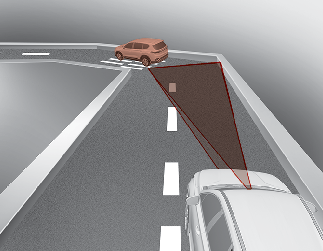
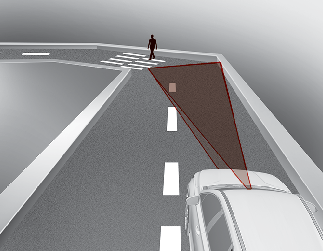
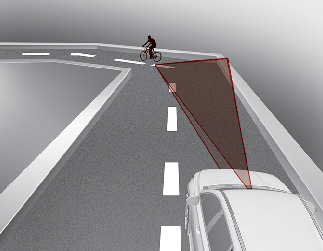
The performance of Forward Collision-Avoidance Assist may be limited when driving on a curved road.
The front view camera or front radar sensor recognition function may not detect the vehicle, pedestrian or cyclist traveling in front on a curved road.
This may result in no alarm and braking when necessary.
Always pay attention to road and driving conditions, and if necessary, depress the brake pedal to reduce your driving speed in order to maintain a safe distance.
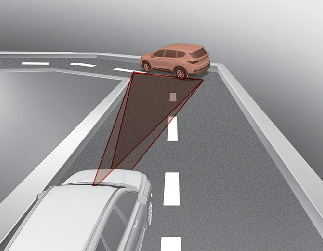
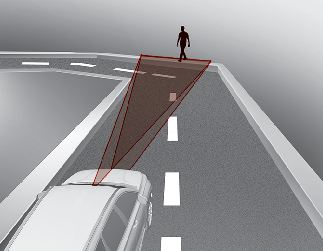
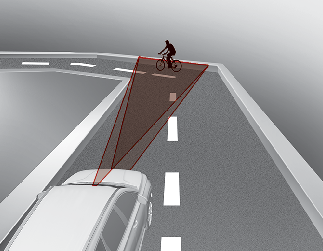
Forward Collision-Avoidance Assist may recognize a vehicle or pedestrian or cyclist in the next lane or outside the lane when driving on a curved road.
If this occurs, the function may unnecessarily alarm the driver and apply the brake. Always pay attention to road and driving conditions, while driving.
-
Driving on a sloped road
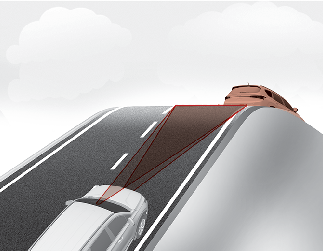
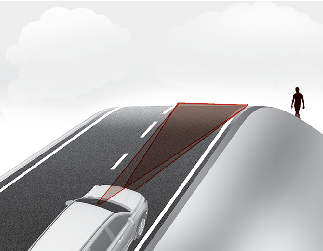
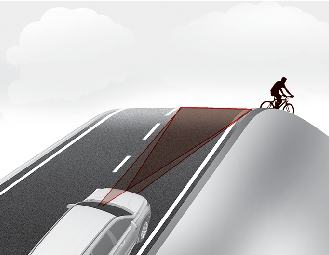
The performance of Forward Collision-Avoidance Assist may be decreased while driving upward or downward on a slope. The front view camera or front radar sensor recognition may not detect the vehicle, pedestrian or cyclist in front.
This may result in unnecessary alarm and braking or no alarm and braking when necessary.
When the function suddenly recognizes the vehicle, pedestrian or cyclist in front while passing over a slope, you may experience sharp deceleration.
Always keep your eyes forward while driving upward or downward on a slope, and, if necessary, depress the brake pedal to reduce your driving speed in order to maintain distance.
-
Changing lanes
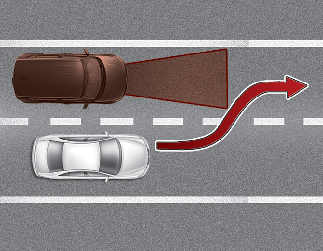
Even though the vehicle in the next lane enters into your lane, it may not be recognized by Forward Collision-Avoidance Assist, until it enters Forward Collision-Avoidance Assist function sensing range.
Especially when the vehicle in the next lane abruptly enters into your lane, it is more likely not be recognized. Always pay great attention.
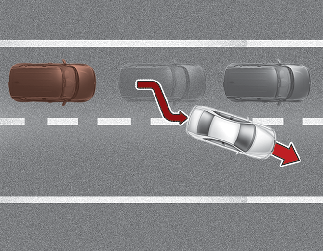
When driving in stop-and-go traffic, and a stopped vehicle in front of you merges out of the lane, Forward Collision-Avoidance Assist may not immediately detect the new vehicle that is now in front of you. In this case, you must maintain a safe braking distance, and if necessary, depress the brake pedal to reduce your driving speed in order to maintain a safe distance.
-
Recognizing the vehicle
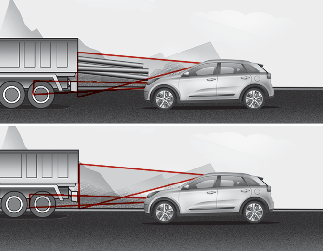
When the vehicle in front has heavy loading extended rearward, or when the vehicle in front has higher ground clearance, it may induce a hazardous situation. Always pay attention to road and driving conditions, while driving and, if necessary, depress the brake pedal to reduce your driving speed in order to maintain distance.
Recognizing pedestrian or cyclist
The sensor may be limited when:
-
The pedestrian or cyclist is not fully detected by the front view camera recognition function, for example, if the pedestrian is leaning over or is not fully walking upright
-
The pedestrian or cyclist is moving very quickly or appears abruptly in the front view camera detection area
-
The pedestrian or cyclist is wearing clothing that easily blends into the background, making it difficult to be detected by the front view camera recognition function
-
The outside lighting is too bright (e.g. when driving in bright sunlight or in sun glare) or too dark (e.g. when driving on a dark rural road at night)
-
It is difficult to detect and distinguish the pedestrian or cyclist from other objects in the surroundings, for example, when there is a group of pedestrians, cyclists or a large crowd
-
There is an item similar in shape or appearance to a person
-
The pedestrian or cyclist is below the sensor's viewing range
-
The sensor can not identify the pedestrian's outline because of other items changing their profile, such as mobility assistance devices
-
The front view camera or front radar is obstructed by a foreign object or debris
-
Inclement weather such as heavy rain or snow obscures the field of view of the front radar sensor or front view camera
-
When light coming from a street light or an oncoming vehicle is reflected on a wet road surface such as a puddle in the road
-
The field of view in front is obstructed by sun glare
-
The windshield glass is fogged up; a clear view of the road is obstructed
-
The adverse road conditions cause excessive vehicle vibrations while driving
-
When the pedestrian or cyclist suddenly enters the path of travel of the vehicle
-
When the cyclist in front is riding perpendicular to the direction of travel
-
When there is any electromagnetic interference
-
When the cyclist is near areas containing metal objects such as a construction zone, railroad, etc.
-
If the bicycle material is not reflected well on the radar
-
When a pedestrian or cyclist’s height is small.
-
When a pedestrian or cyclist’s behavior is unstable.
-
When a pedestrian or cyclist suddenly interrupts in front of the vehicle.
-
When there are many pedestrians or cyclists.
-
When there is an object that reflects radar well. (such as a guardrail or a nearby vehicle)

-
Do not use Forward Collision avoidance Assist when towing a vehicle. Application of Forward Collision-Avoidance Assist while towing may adversely affect the safety of your vehicle or the towing vehicle.
-
Use extreme caution when the vehicle in front of you has cargo that extends rearward from the cab, or when the vehicle in front of you has higher ground clearance.
-
Forward Collision-Avoidance Assist is designed to detect and monitor the vehicle ahead or detect a pedestrian or cyclist in the roadway through front view camera recognition and front radar signals. It may not always detect bicycles, motorcycles, or smaller wheeled objects such as luggage bags, shopping carts, or strollers.
-
Never try to test the operation of Forward Collision-Avoidance Assist. Doing so may cause severe injury or death.
-
If the front bumper, front glass, front view camera or front radar have been replaced or repaired, have the vehicle inspected by a professional workshop. Kia recommends to visit an authorized Kia dealer/service partner.
-
If the function detects an object that has a similar shape or characteristics of a vehicle or a pedestrian, Forward Collision-Avoidance Assist may operate.

In some instances, Forward Collision-Avoidance Assist may be cancelled when subjected to electromagnetic interference.